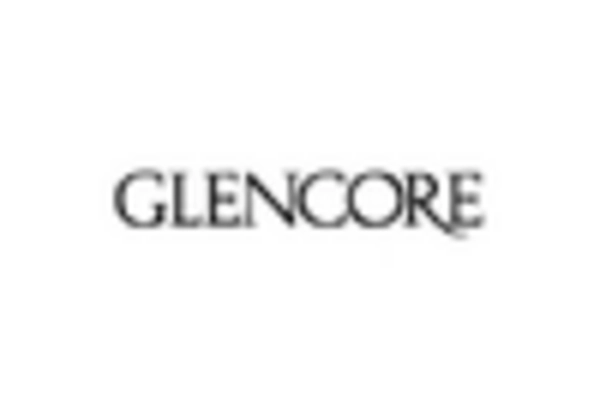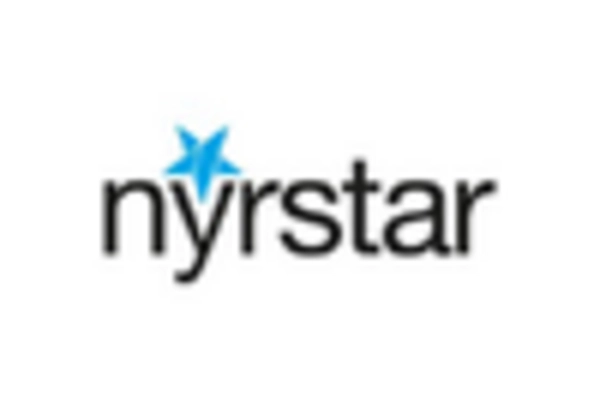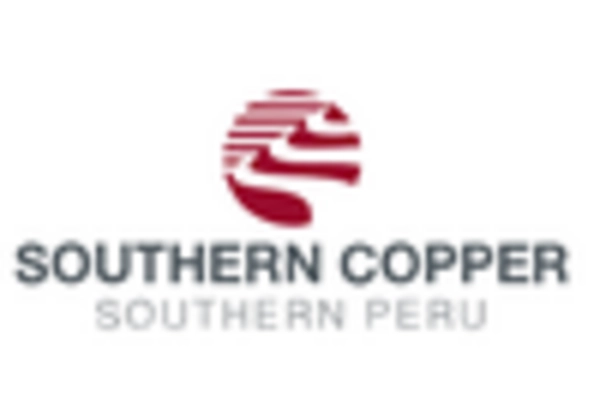Construction Sector Growth
The construction sector in Europe is witnessing a resurgence, which is significantly impacting the zinc market. With an estimated growth rate of 4% in construction activities in 2025, the demand for zinc is expected to rise correspondingly. Zinc is widely used in roofing, cladding, and other building materials due to its excellent corrosion resistance and aesthetic appeal. Furthermore, the European Union's commitment to sustainable building practices is likely to bolster the use of zinc in construction projects. As urbanization continues to expand, the need for durable and sustainable materials will drive the consumption of zinc, thereby enhancing its market position within the construction sector.
Regulatory Support for Zinc Usage
Regulatory frameworks in Europe are increasingly favoring the use of zinc in various applications, which is positively influencing the zinc market. Policies aimed at reducing carbon emissions and promoting sustainable materials are encouraging industries to adopt zinc as a viable alternative. For instance, the European Union's directives on material efficiency and waste reduction are likely to enhance the demand for zinc in manufacturing processes. As companies strive to comply with these regulations, the consumption of zinc is expected to rise, potentially increasing its market share in various sectors. This regulatory support may provide a stable foundation for the growth of the zinc market in the coming years.
Increased Focus on Renewable Energy
The transition towards renewable energy sources in Europe is creating new opportunities for the zinc market. Zinc is increasingly being utilized in the production of batteries, particularly for renewable energy storage solutions. As Europe aims to achieve its climate goals, the demand for zinc in energy storage applications is projected to grow significantly. In 2025, the market for zinc-based batteries is expected to expand by approximately 15%, reflecting the industry's shift towards sustainable energy solutions. This trend indicates that the zinc market is likely to play a crucial role in supporting the renewable energy sector, thereby enhancing its overall growth prospects.
Rising Demand from Automotive Sector
The automotive sector in Europe is experiencing a notable increase in demand for zinc, primarily due to its application in galvanization processes. Zinc is essential for protecting steel components from corrosion, thereby enhancing the longevity and durability of vehicles. In 2025, the automotive industry is projected to account for approximately 30% of the total zinc consumption in Europe. This trend is driven by the growing emphasis on vehicle safety and performance, as well as the shift towards electric vehicles, which often require more robust materials. Consequently, the zinc market is likely to benefit from this rising demand, as manufacturers seek to incorporate zinc into their production processes to meet regulatory standards and consumer expectations.
Technological Innovations in Zinc Production
Technological advancements in zinc production processes are poised to transform the zinc market in Europe. Innovations such as improved extraction techniques and recycling methods are enhancing the efficiency and sustainability of zinc production. In 2025, it is anticipated that the adoption of these technologies could reduce production costs by up to 20%, making zinc more competitive against alternative materials. Furthermore, advancements in processing technologies are likely to improve the quality of zinc products, thereby expanding their applications across various industries. This focus on innovation may not only boost the zinc market but also contribute to a more sustainable and environmentally friendly production landscape.


















Leave a Comment